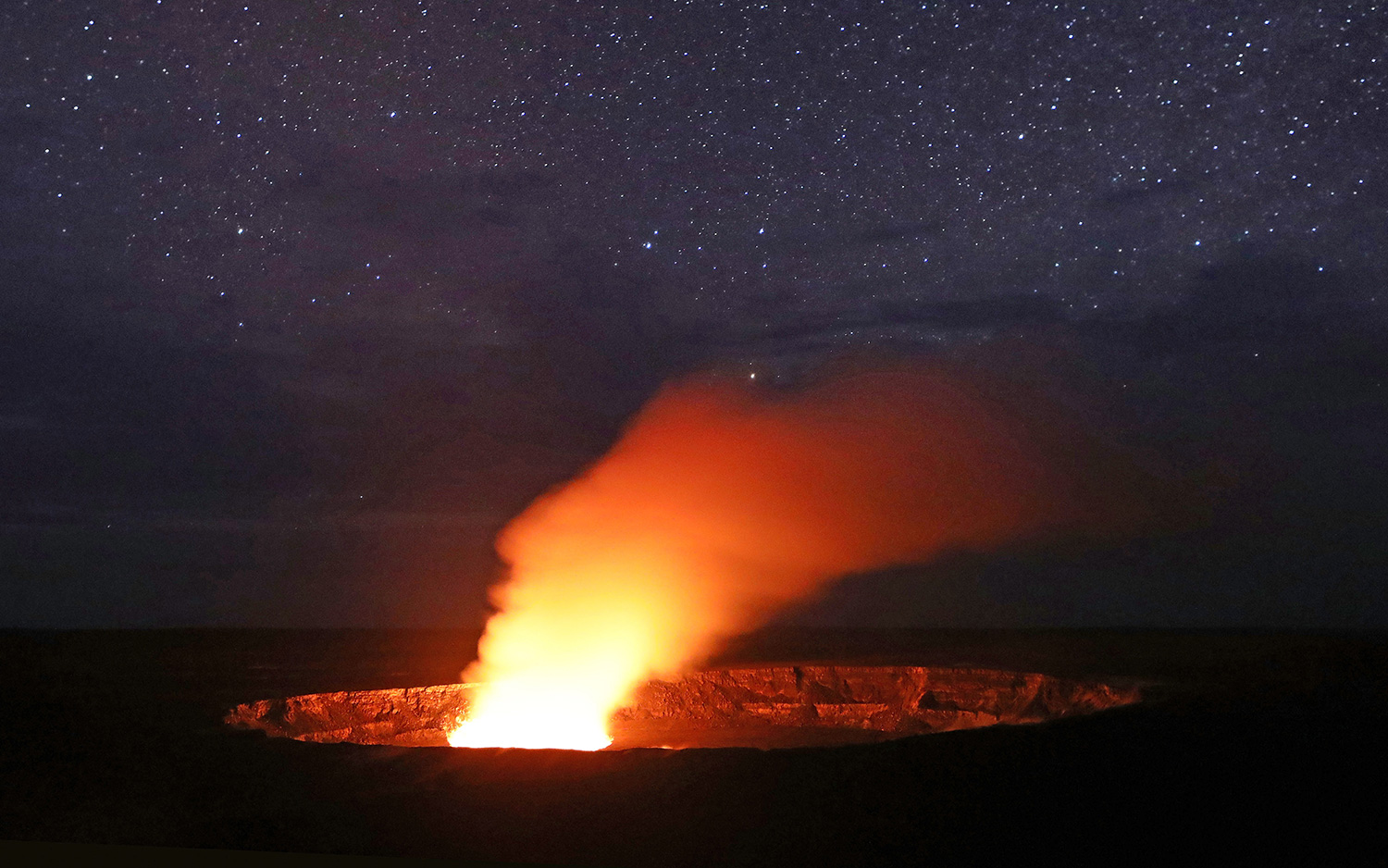Kilauea Volcano Could Launch 10-Ton Ballistic Boulders in a Dramatic Explosion
That's because a lava lake near the summit of Kilauea is draining, setting the stage for a steam explosion.
The volcano has been undergoing big changes over the past few weeks, culminating in a dramatic eruption following a 5.0-magnitude earthquake and a subsequent magnitude-6.9 earthquake last week. That powerful outburst occurred after rockfalls caused the collapse of the Pu'u 'Ō'ō crater at the summit of Kilauea, which had been puffed up like a soufflé filled with red-hot lava. That lava had to go somewhere, and it oozed underground to the east rift zone of the mighty volcano, where magma doesn't usually travel. New volcanic fissures or cracks opened up in the ground, allowing lava and toxic gases to escape into the surrounding residential areas, called Leilani Estates and Lanipuna Gardens. [Photos: Fiery Lava from Kilauea Erupts on Hawaii's Big Island]

A side effect of all these shifts is that a lava lake on the summit called Halema'uma'u has been draining like a bathtub; as of May 6, it had dropped 722 feet (220 meters), according to the U.S. Geological Survey. As it continues to descend, the magma column could drop below the water table, the point where the ground is saturated with water, and heat up the groundwater.
And that could spell danger for the surrounding areas. With the lava in Halema'uma'u, the walls surrounding the dwindling lake are now steep and unstable, and rockfalls are inevitable, said Don Swanson, a geologist with the Hawaiian Volcano Observatory, said at a news conference yesterday.
"When you remove that support from the conduit and the crater, it causes instability and causes material to fall in," Matt Patrick, a geologist with Hawaiian Volcano Observatory, said at the news conference.
In turn, there will be an increased risk that falling rocks will plug the conduit for Halema'uma'u; as lava heats the underground pool of water, steam will form but will have nowhere to go.
As pressure builds, eventually Kilauea will explode steam, hurling any loose rocks with it — a phenomenon known as a phreatic explosion, Tina Neal, a geologist with the Hawaiian Volcano Observatory, said at the news conference.
Sign up for the Live Science daily newsletter now
Get the world’s most fascinating discoveries delivered straight to your inbox.
The volcano could eject rocks weighing as much as 10 to 12 tons over a distance of half a mile (1 kilometer) and launch pebble-size rocks across a couple of miles, according to geologists from the observatory.
This explosion could also eject dangerous amounts of ash, sulfur dioxide and acid rain. The clock begins to tick when the magma drops below the water table, which is likely to happen in mid-May, Swanson said.
Kilauea has been erupting continuously for decades, but it hasn't spewed rocks in such an explosive manner since 1924, according to the Associated Press.
While the surrounding areas will be affected, the whole island is unlikely to see dramatic effects, Swanson said.
"Past explosive eruptions at Kilauea have been comparatively small on a worldwide scale," Swanson said. "We don't anticipate there being any wholesale devastation or evacuation."
Meanwhile, the lava in the east rift zone is inching dangerously close to the Puna Geothermal Venture plant that houses 50,000 gallons (190,00 liters) of pentane, a volatile gas. But all of the pentane is expected to be removed by the end of the day today (May 10), the Associated Press reported.
Originally published on Live Science.

Tia is the managing editor and was previously a senior writer for Live Science. Her work has appeared in Scientific American, Wired.com and other outlets. She holds a master's degree in bioengineering from the University of Washington, a graduate certificate in science writing from UC Santa Cruz and a bachelor's degree in mechanical engineering from the University of Texas at Austin. Tia was part of a team at the Milwaukee Journal Sentinel that published the Empty Cradles series on preterm births, which won multiple awards, including the 2012 Casey Medal for Meritorious Journalism.









